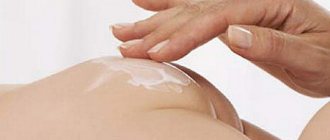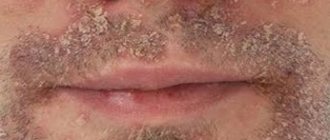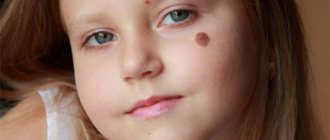August 16, 2021
Peeling on the hands is a signal that the skin is not hydrated enough. In diagnostics, this sign is called “xerosis.” The causes of dry and flaky hand skin are not always pathological. Often this only means that you need to change your household habits. If the discomfort does not go away for a long time, the symptoms increase, you need to contact a dermatologist for an examination.
Are cracks in a child’s fingers dangerous?
Almost all children at least once in their lives experience dry fingers or palms and the appearance of minor injuries on the skin of their hands. In most cases, such microtraumas are not dangerous and heal on their own. However, if they do not go away for a long time, are accompanied by pain and itching, this problem cannot be ignored. Cracking of the skin on the hands may indicate the presence of serious diseases of the internal organs and body systems. Therefore, if you notice that your child’s fingertips, knuckles and palms are cracking, be sure to consult a doctor.
Additional measures
As a supplement to the main treatment, it is permissible to use traditional medicine. Of course, they can be used only after determining the cause of peeling of the fingertips. This is due to certain prohibitions. For example, if you have parasites or scabies, it is unacceptable to take warm baths - this can only aggravate the general condition.
Chamomile solution, in which you need to hold your hands for several minutes, helps relieve itching, irritation and other unpleasant symptoms of peeling. A number of other herbs, for example, string or calendula, enhance the beneficial effects. No less effective is sea salt for warm baths.
Important to remember:
- It is not recommended to heat water for baths to high temperatures; approximately 38-42 degrees is sufficient;
- after the restoration procedure, it is necessary to blot the cover with a soft towel with dense pile;
- It is unacceptable to use products made of hard materials for wiping, or to thoroughly rub baby’s skin.
Even healthy, but already dry fingers or palms are recommended to be lubricated with cream for additional hydration. It is acceptable to use oil solutions or, for example, multivitamin formulations. They will not only moisturize the epidermis, but will also contribute to its proper nutrition.
Do not miss
- Do not miss
A delicate question: how to properly treat foot skin fungus in order to completely get rid of the disease
Another significant factor is hand and foot hygiene, the observance of which is fundamentally important for recovery. If fungal diseases have previously been detected, it is necessary to purchase shoes or clothing exclusively from natural materials.
It is strongly recommended to pay attention to the fact that the child must have his own towel and bed linen. To prevent relapse, you will need to wash them exclusively in hot water; you can additionally use antiseptics.
Cracks on a child's fingers: causes and treatment
Any violation of the integrity of the skin that appears in children causes concern among parents. Therefore, as soon as mothers and fathers notice the appearance of this problem, they ask the question: “Why do the child’s fingers crack?” Only a doctor can answer this question competently, so first of all it is recommended to consult a pediatrician or dermatologist.
The occurrence of such damage can be caused by external and internal preconditions.
External factors:
- Mechanical impact, friction. If there is constant pressure or friction on a child's palms and fingers, the integrity of the skin may be compromised.
- Temperature effect. If a child has cracked fingers in winter after spending a long time outside without gloves, this may be the result of exposure to low temperatures.
- Insufficient air humidity. With the start of the heating season, many people complain of increased dry skin. Therefore, if the air in the room where the child is is too dry, this can lead to the formation of microcracks in the hands.
- Reaction to contact with soap, household chemicals, chlorinated water, etc. Aggressive components of hygiene products and chlorinated tap water can dry out the skin. As a result, it cracks, causing pain and discomfort to the child.
Internal factors that cause cracks in a child’s hands include the following:
- Dermatological diseases. Dry eczema, psoriasis, contact and allergic dermatitis - all these diseases can manifest as dry and cracking skin on the hands.
- Fungal skin lesions. Fungi are often localized on the fingers and toes. If, in addition to the formation of skin cracks on the fingers, the lesion also affects the nails, this may be a sign of onychomycosis, a fungal disease caused by the fungi Trichophyton rubrum.
- Infectious diseases. One of the signs of scarlet fever is peeling of the skin on the palms and soles with the formation of cracks on it.
- Hypovitaminosis. A lack of certain vitamins (A, B1, C, P) in the body causes the skin to dry, peel and crack. In some cases (for example, with vitamin PP hypovitaminosis), the skin may not only crack, but also peel off in layers.
- Anemia. Metabolic disorders characteristic of anemia (anemia) often lead to impaired oxygen supply to the skin. As a result, the child's fingertips crack.
- Hypothyroidism. In most cases, hypothyroidism occurs not in children, but in adults, but sometimes it can develop in childhood. Its symptoms include, among other things, dry skin on the heels and palms, cracking, and brittle nails.
- Diabetes. Diabetes mellitus is often accompanied by skin lesions on the palms and heels: it becomes dry, rough, its turgor decreases, and deep cracks appear.
- Scleroderma. When a child develops systemic scleroderma (an autoimmune connective tissue disorder), the skin on the fingers may become thick, dry, and cracking.
- Raynaud's disease. It is a phenomenon of a three-phase change in the color of the skin of the fingers and toes, and in some cases also the tip of the nose, lips, tip of the tongue, and auricle. At the beginning of the attack, whitening of the skin appears, accompanied by coldness and a feeling of numbness. This phase is replaced by a phase of cyanosis - blue discoloration of the skin. At the end of the attack, redness appears with a feeling of heat, “crawling goosebumps,” and pain. The disease mainly affects adults, but in rare cases it can also be diagnosed in children. The disease is manifested by excessive dryness of the skin on the hands and feet, the appearance of hangnails near the nails, and the formation of ulcers and cracks.
- Reaction to stress. Severe emotional shock can lead to disruption of the hydrolipid balance of the skin, its dryness and cracking.
Treatment of cracks on the fingers of a child should be carried out under the supervision of a specialist. The doctor will prescribe appropriate therapy depending on the root cause of the problem. Usually, to speed up recovery, it is recommended to use moisturizing and nourishing creams and ointments that normalize the hydrolipid balance of the skin, eliminating dryness and flaking. If the problem is caused by a fungal infection, antimycotics (antifungal drugs for external use) are prescribed. If skin cracking is accompanied by severe itching, antihistamines may be recommended. Also, to achieve a positive result, it is important to eat a balanced diet and, if necessary, take vitamin and mineral complexes. It is important to protect the skin of your hands from aggressive substances contained in household chemicals and hygiene products, as well as limit contact with chlorinated water.
You can supplement the treatment prescribed by your doctor with the use of La-Cri products. To combat this problem, La Cree cream for dry skin is well suited. The product contains natural vegetable oils - jojoba, shea and wheat germ. They improve the condition of the hydrolipid mantle of the epidermis, fight dryness and provide the necessary nutrition to the skin. Beeswax is known for its nourishing and emollient properties. In addition, it has a restorative and anti-inflammatory effect on damaged skin. Natural extracts of licorice and string reduce itching, fight flaking and redness of the skin, and have an anti-inflammatory effect.
Fungal infection
If your child likes to try on other people's shoes, walks barefoot in public places or goes to the pool, there is a risk that he has contracted a fungus.
In addition to peeling, this infection is characterized by the following changes in the affected area:
- itching;
- redness, inflammation;
- unpleasant odor;
- thickening of the skin;
- formation of microcracks.
It often happens that peeling is the only symptom. Parents may not suspect that it is a fungus. The skin between the toes usually suffers first, and then, if left untreated, the infection progresses.
To combat the fungus, antifungal agents are used, which are recommended by a dermatologist, mycologist or podologist. The sooner treatment is started, the easier and faster it is to get rid of the infection.
Experts' opinion
According to the results of clinical studies conducted by the Union of Pediatricians of Russia, it was proven that when using a complex of TM LA-KRI products, the level of skin moisture decreased by 4% in comparison, and in the group that used placebo, the level of moisture decreased by 9%.
The conducted clinical study proves the high efficiency, safety and tolerability of products for daily skin care of children with mild and moderate forms of atopic dermatitis and during remission, accompanied by a decrease in the quality of life of patients. As a result of therapy, a decrease in the activity of the inflammatory process, a decrease in dryness, itching and flaking was noted.
It has been proven that La Cree cream for dry skin:
- eliminates dryness and flaking;
- retains the skin's own moisture;
- protects skin from wind and cold.
A child has cracked skin on his fingers: is this dangerous?
If the cracks are small and shallow, they are not dangerous in themselves. However, they violate one of the main functions of the skin - protective. Therefore, if an infection gets into them, an inflammatory process may develop, followed by suppuration. This means that even the smallest areas of chapped skin cannot be left unattended. It is necessary to find out the reason for their appearance and begin appropriate treatment.
In addition to the possible penetration of infection, cracks in a child’s hands are dangerous for another reason. They hurt and cause discomfort; it may be difficult for the baby to bend his fingers and touch anything. They can also interfere with a child’s social adaptation, causing him psychological discomfort when communicating with peers, at school or in kindergarten.
Sources:
- Smirnova G.I. Atopic dermatitis and skin infections in children, Russian pediatric journal, 2014
- E.N. Saverskaya, Diaper dermatitis: answers to questions from pediatricians and parents in the light of current global trends, Medical Council magazine, 2019
- I.I. Ryumina, V.V. Zubkov, Newborn skin care, Healthy Child magazine, 2017
Photos of eczema
Photo album on the diseaseWhat to do if your baby's skin peels?
First of all, do not forget that this is usually a natural developmental stage that the baby will outgrow over time. And take a number of measures to prevent peeling:
- Bathe your child no more than once a day. You can even less often - every other day.
- Use shampoo and baby soap no more than once a week.
- Do not dry your baby's skin after bathing, just pat dry with a towel and then let it air dry.
- After bathing and changing clothes, lubricate the folds on your body with oil.
- Change diapers as needed, but at least every 3-4 hours. After drying your baby's skin, let her breathe for a few minutes.
- Before walking in winter, apply oil to exposed skin; in summer, use sunscreen for children. Allow the product to absorb before going outside.
- Humidify the air in your baby's room.
- Use products designed for washing children's clothing.
- Choose diapers that are gentle on your baby's skin.
| Our expert Polina Vasilyeva dermatologist |
| And remember that the baby does not need to be “bundled up”, even if it seems to you that the room is cool. The accumulation of excess heat leads to sweating. Even if a child feels dry to the touch, this does not mean that his body has stopped evaporating moisture. Overwrapped children sweat, cool down, sweat again, cool down again, and this process leads to decreased immunity and various diseases. In addition, sweat dampens clothing, reducing its heat-protective properties. Therefore, it is necessary to take into account all possible individual characteristics of the child, as well as temporary situational factors that will determine the choice of optimal clothing. |
Authors: Huggies experts, dermatologist Polina Vasilyeva









